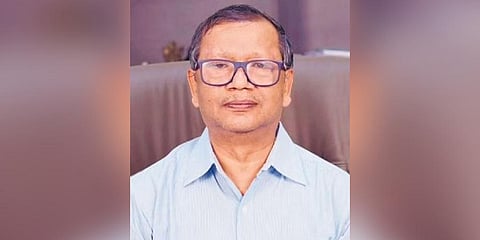

The Department of Atomic Energy and Tata Trusts have collaborated to set up a state-of-the-art cancer hospital and research centre on National Institute of Science Education and Research (NISER) campus at Jatni at an estimated Rs 650 crore. Hemant Kumar Rout speaks to Director of NISER Sudhakar Panda who conceptualised the ambitious project and brought it to the logical end.
The pre-requisites including the MoU for land are done. When will the cancer hospital take off?
The project is at an advanced stage. The Tata Trusts will start the construction once foundation stone is laid, probably in a month. It will take 18 months to complete construction, we hope Odisha will see the best cancer hospital by 2025.
However, we have decided to start chemotherapy in the existing hospital along with the population cancer registry. We will focus on cancer diagnostics and by the time the hospital and research centre is ready, we will have a registry of people suffering from different types of cancers.
Since diagnosis takes time, the population registry will help understand patients and save time. We have a 20-bed hospital with four doctors and six nurses. A team of doctors from Tata Memorial Centre (TMC) at Mumbai will come here and train our doctors so that they can screen people from various districts and maintain the registry. We will soon hire more doctors and other paramedical staff. The activities will start next month. Once the registry is prepared, doctors can plan their treatment accordingly.
How did the concept of setting up the cancer centre on NISER campus come?
It began in 2017 during a tour to TMC for a meeting. I saw more than 70 per cent Odia speaking people seeking medical attention. Their condition pained me and I decided to start working on a cancer hospital so that people of my state will not have to come to Mumbai for treatment.
I approached the then Secretary of Atomic Energy and he assured to support the cause. At that time I was Director of Institute of Physics and my faculty members were worried that I was converting the institute into a hospital. I felt demoralised and kept quiet. I again pursued my dream project when I became the Director of NISER in 2019.
Initially conceived as a SPOKE and HUB model, the cancer hospital and research centre at NISER will now be the exact replica of TMC. Fortunately, both the State government and the Centre have come forward to support.
Why did you think of a cancer hospital? How is NISER involved in cancer research?
NISER has two wings - School of Chemical Science and School of Biological Science where 10 faculty members are already working on cancer research. If scientific research and clinical research go side by side in one campus, it can make wonders. Such a concept is lacking in India. We wanted to have the cancer hospital on NISER campus so that clinical and scientific research can come together.
Along with the hospital, a cancer drug manufacturing unit is also coming up. What is the plan?
We are also setting up a medical cyclotron on the campus for which Odisha government has promised Rs 100 crore. Most of the drugs required for treatment will be manufactured at the unit and cancer hospitals in the State will not have to depend on others. I want Odisha to be self sufficient in drugs to treat cancer patients. The State government has sought a proposal from Director of Bhabha Atomic Research Centre (BARC) for the cyclotron. Hopefully, the project will come up along with the cancer hospital and research centre.